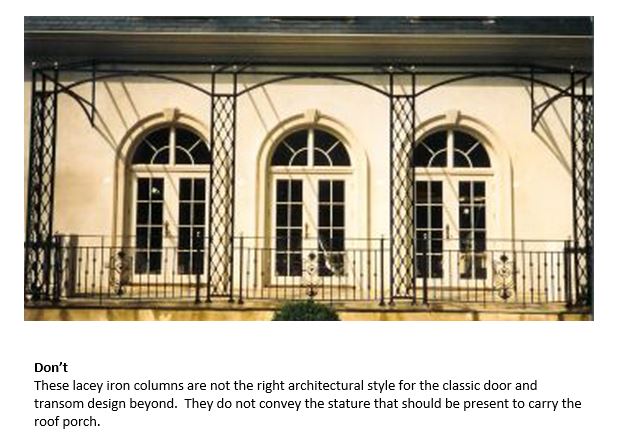Ever since the Greek introduction of the three ancient orders of architecture – Doric, Iconic, and Corinthian – and their notable corresponding column styles, architects have found hundreds of ways to design this basic structural and visual element. The column is a design element that has endured through the ages due to its versatility. Columns not only provide structural support, but with a little embellishment are a simple way to add great character and defining architectural style to a building.
Today, columns are designed and illustrated most prolifically on front porches and rear verandas to support structures that give us shelter from the elements. A column can be as simple as a wood post with decorative wraps to fit the architectural style, or a steel column with no additional detailing for a clean, contemporary expression. Regardless of the material that is used, good column design relies on the right proportions. Listed below are a few tips for successful column design.
- When designing a column with a base, it is important that the width of the column compliment the size of the base and vice versa.
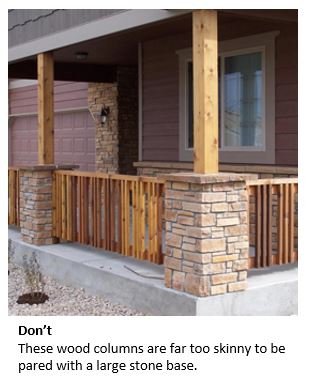
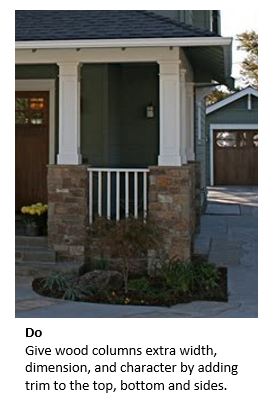
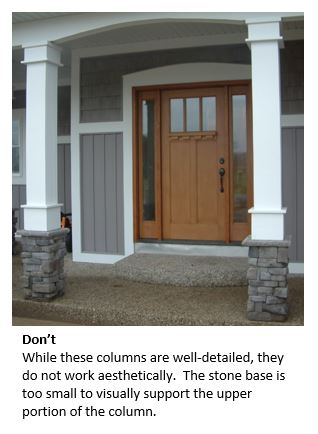
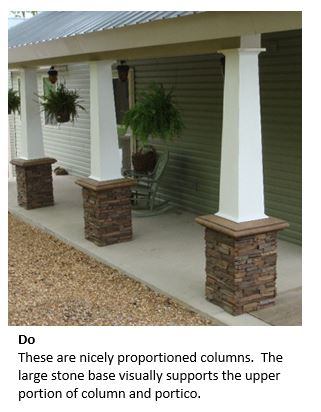
2. The height and width of a classical column needs to be designed in relationship to the architectural element it will support.

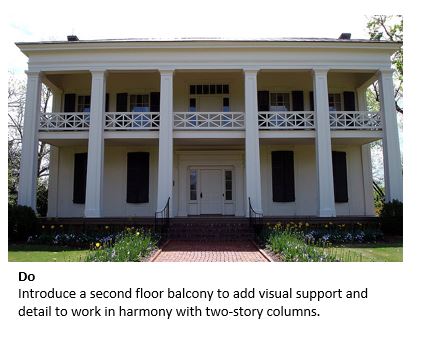
3. The spacing and design of the column needs to match and support the architecture.

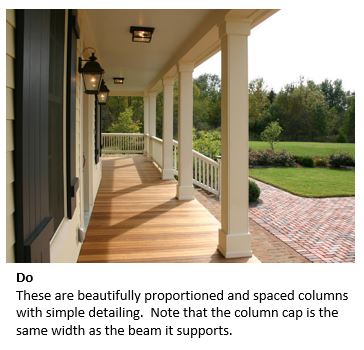
4. Avoid meaningless column supports. Just because it does the job, does not mean it is appropriate to the design.
